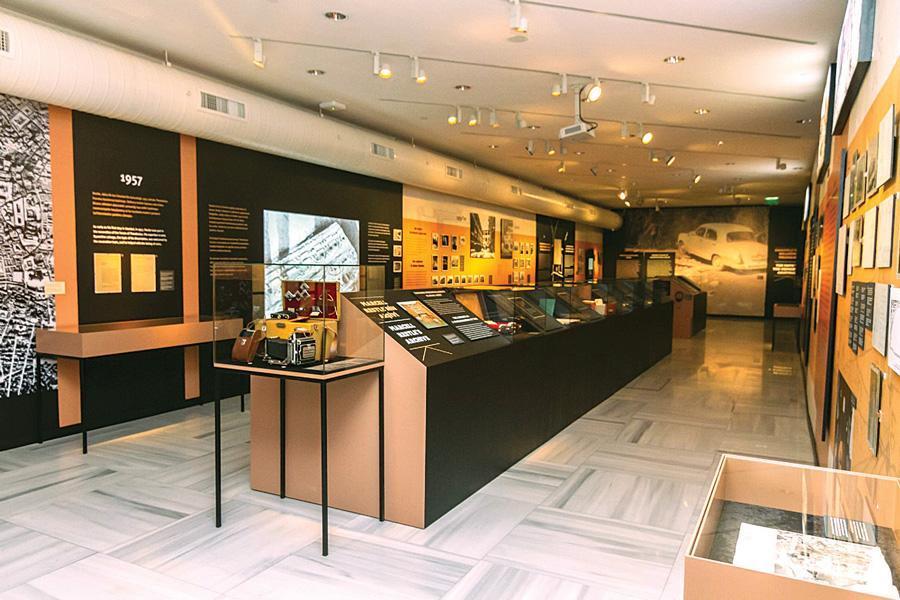
A new exhibition at Koç University’s Research Center for Anatolian Civilizations (ANAMED), entitled “Archival Memories: Marcell Restle’s Research in Anatolia and Beyond,” opened last week within the scope of the 5th International Sevgi Gönül Byzantine Studies Symposium.
The exhibition gives a deep insight into the research of a passionate art historian, Marcell Restle, who dedicated his life in great intensity to the study of Asia Minor in late antiquity and Byzantine as well as Seljuk and Ottoman times.
Restle taught at the universities of Vienna and Munich while making countless study trips around the eastern Mediterranean, including to Istanbul and Anatolia, which led him to become an expert in the field of art history and architecture.
He took on a pioneering role in the systematic examination of the heritage of Cappadocia, one of the crossroads of Anatolia. His detailed studies of Byzantine architecture and mural paintings across this wide region is considered from many perspectives to be the beginning of modern art historical studies of Cappadocia.
In the course of an intense career that lasted approximately 60 years and led to the near complete loss of his sight, Restle produced an extensive archive of thousands of slides, photographs, written documents, technical and photogrammetric drawings, and video and sound recordings, all the result of meticulous and patient labor.
Two years before his death, in 2014, he donated this rich collection to the Department of Art History of the University of Vienna.
Curated by Lioba Theis, Su Sultan Akülker, and Caroline Mang, “Archival Memories” presents a small but important part of his collection at the Digital Research Archive for Byzantium (DiFaB) that bears the deep traces of a life dedicated to science.
The exhibition consists of four chapters: In the first three, Restle’s work in Istanbul, Anatolia, and the Hauran region of Syria is exhibited chronologically. The fourth chapter displays a short account of the archive.
Focusing on the DiFaB’s archive and supporting it with several collections, “Archival Memories” informs viewers about how a researcher organized his working day, how he systematically allotted his time, and what methods he used in the pre-digital age.
On the other hand, it aims to present from retrospective perspectives the states of numerous cultural assets, most of which remain today only as memories within urban structures.
[HH] Marcell Restle
Restle was born in 1932 in Germany. His early enthusiasm for art and architecture led him to study art history, Byzantine studies, and the history of Christianity at the universities of Tübingen and Munich immediately after graduating from the humanistic gymnasium in Bad Wurzach.
Mediated by the German Academic Exchange Service, he received a scholarship from the Turkish government in 1956 to continue his studies at Istanbul University where he took courses from German and Turkish professors such as Kurt Erdmann, Halet Çambel, and Semavi Eyice.
The in-depth study of Islamic art in general and Ottoman art in particular opened up new perspectives for Restle. The studies he made of Islamic, Seljuk, and, especially, Ottoman art and architecture, as well as of Byzantine art; the classes he taught at the universities of Vienna and Munich on these topics; and the research he’s done in an area spanning the eastern Mediterranean made him an expert in the field of architecture, especially in the systematic documentation of buildings. Consisting of 17,000 slides, over 10,000 black-and-white photographs, several documents, various sketches and large-scale drawings as well as many audio and video materials, Restle donated his library and collection of photographs and architectural plans to DiFaB, which collects and digitally preserves image collections relating to the material culture of the Byzantine Empire and its sphere of influence. Restle died in 2016.